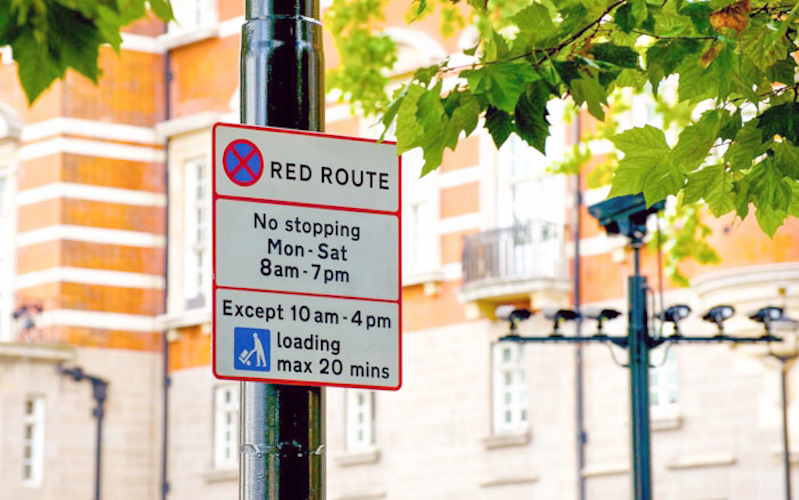It’s time for a rethink on London’s Red Routes, the major thoroughfares making up just five per cent of the capital’s roads but carrying some 30 per cent of the city’s traffic. That was the message from transport and environmental campaigners at a Centre for London session today, looking at the 580-kilometre network managed by Transport for London and first established 30 years ago.
Including the North and South circular roads and the “inner ring road” as well as arterial routes and central zone roads including Park Lane and Victoria Embankment, the network, where parking and loading is restricted, was designed to keep traffic flowing following the abandonment of road building and widening policies in the 1980s.
But things have moved on, said Oliver Lord, co-author of a new Environmental Defense Fund Europe report, Rethinking London’s Red Routes. The network now makes up the “most polluted and most dangerous” roads in the capital, he said, with 37 per cent of all road traffic fatalities taking place on them and pollution levels up to 57 per cent more than the average for London roads.
Transport policies promoting Low Traffic Neighbourhoods (LTNs) in “residential” areas while maintaining priority for motor vehicles on the Red Routes are in danger of ignoring the fact that many Londoners also live and work on that network, the report’s co-author Araceli Camargo, of Centric Lab, added.
In fact, the focus on LTNs has “exposed a vacuum in policy to actively reduce traffic on busier roads, especially the red routes,” the EDFE and Centric Lab report argues.
“Recent schemes to address rising traffic levels have often been targeted on already less congested roads,” it says. “This cannot be the only intervention as it doesn’t solve the air pollution equitability problem and in some circumstances has put more of a health burden on residents living on Red Routes.”
Steve Gooding, director of the RAC Foundation and former senior Department of Transport official, agreed that while Red Routes had been designed as a “distributor” network, not for local traffic, “we’ve always built right up to them”.
New data is needed about which types of traffic are using the Red Routes and how efficiently it is moving, he said, calling for the work of the London Roads Task Force, commissioned by Boris Johnson as Mayor, to be revisited. “It seemed to disappear when Sadiq Khan came in,” he said.
The Task Force’s 2013 report recommended investment of £30 billion over 20 years to promote active, sustainable travel alongside an “efficient” road network for “movement and access”.
Speakers agreed that faster action is now needed to phase out polluting vehicles and tackle what Lord called a delivery van “wild west”, included more coordinated consolidation of freight, deliveries taking place outside working hours and support for cargo bikes. “And give local people a bit more of a say” in traffic planning,” Gooding added.
Other recommendations included a fair system of road-user charging – “Everyone’s asking for this but it’s not being looked at,” said Lord – 20 mph limits on red routes, 24/7 bus lanes, replacing “staggered” or two-part pedestrian crossings, more segregated space for cyclists, and more work to protect Red Route homes from pollution.
Twenty mile an hour limits across the whole of the central area Red Route network within the current Congestion Charge zone were introduced last year. TfL is also trialling extended bus lane hours across the network.
Read more about the Centre for London event and watch a webcast of it here. image from TfL.
OnLondon.co.uk provides in-depth coverage of the UK capital’s politics, development and culture. It depends greatly on donations from readers. Give £5 a month or £50 a year and you will receive the On London Extra Thursday email, which rounds up London news, views and information from a wide range of sources, plus special offers and free access to events. Click here to donate directly or contact davehillonlondon@gmail.com for bank account details.

